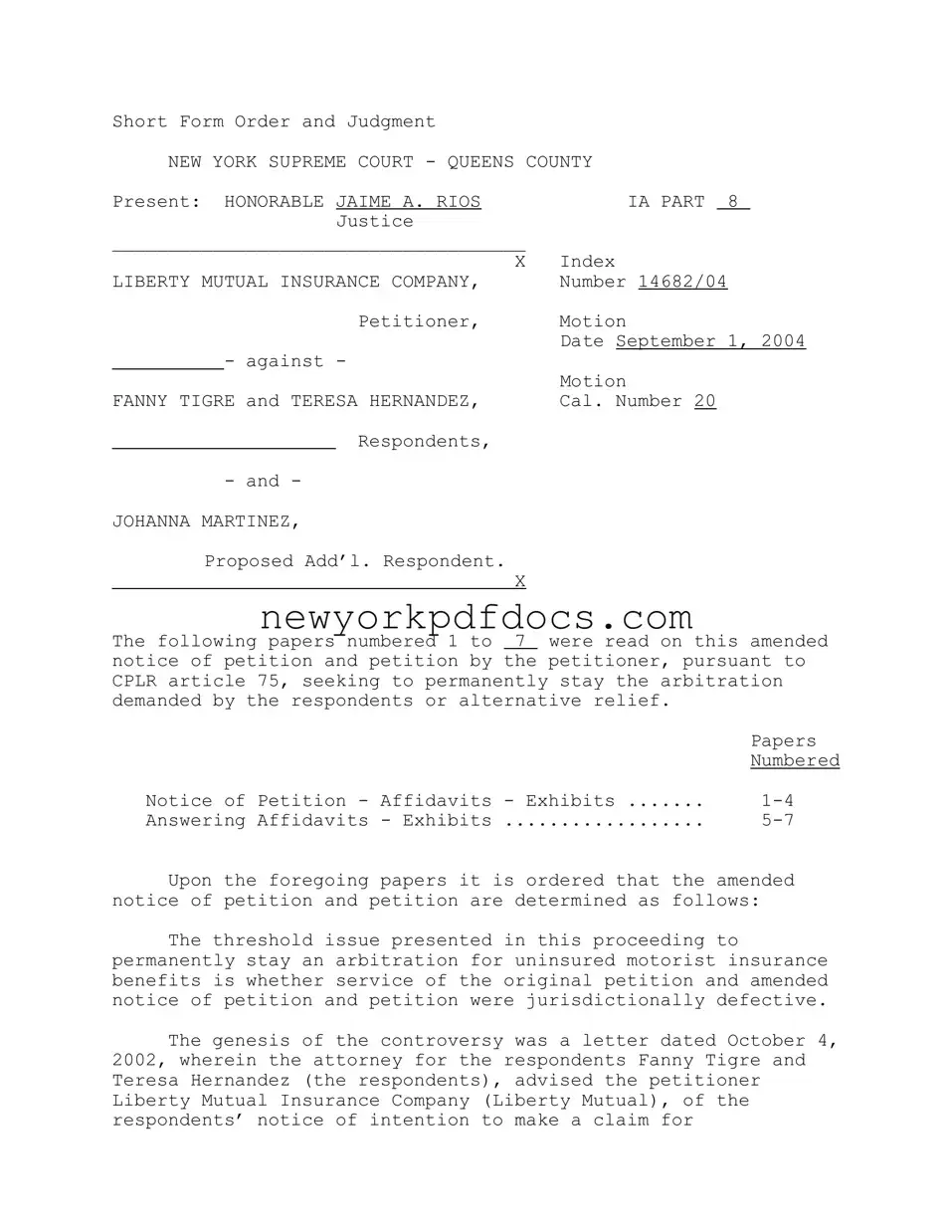uninsured/underinsured benefits based upon an accident that occurred on September 4, 2002.
By demand dated June 1, 2004 and received by Liberty Mutual on June 7, 2004, the respondents, through their attorney, sought arbitration of their claim for such benefits.
Court records disclose that Liberty Mutual filed a notice of petition and petition to permanently stay the arbitration on June 25, 2004; however, the notice of petition bore a return date of June 27, 2004, a period of two days, and there is no affidavit of service in the record. In any event, on June 30, 2004, Liberty Mutual served an amended notice of petition bearing a return date of July 27, 2004.
Annexed to the amended notice of petition is an affidavit of service which initially states that service was made by certified mail, return receipt requested; however, Liberty Mutual has not produced the return receipt or other evidence of such mailing. Moreover, the affidavit of service also states that service was accomplished by regular mail, and the respondents’ attorney has produced an envelope demonstrating that the amended notice was served on him by regular mail.
In its petition Liberty Mutual seeks, inter alia, a permanent stay on the ground that the adverse vehicle had insurance coverage. In the alternative, it seeks leave to join the driver of the offending vehicle, and a temporary stay pending a hearing on the issue of coverage. In addition, Liberty Mutual seeks an order directing the respondents’ compliancy with the insurance policy provisions mandating discovery.
The respondents oppose the petition contending, inter alia, that: (1) the original notice of petition was a nullity as it bore an incorrect return date; (2) the amended notice of petition was a nullity as it was served by regular mail rather than in a manner required by CPLR 7503; (3) Liberty Mutual failed to demonstrate that the offending vehicle was insured; and, (4) Liberty Mutual waived its right to discovery.
Pursuant to CPLR 304, a special proceeding is commenced by the delivery of a notice of petition and petition to the clerk of the court in the county in which the special proceeding is brought, and the payment of the filing fee (see Matter of One Beacon Ins. Co./CGU Ins. Co. v Daly, 7 AD3d 717 [2004]; Matter of Allstate Indem. Co. v Martinez, 4 AD3d 422 [2004]; CPLR 304).
With respect to service, CPLR 7503[c] provides that notice of an application to stay arbitration shall be served in the same
